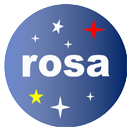Project Description
Europe set up in 2005 the Cosmic Vision plan for the years 2015-2025. The European Space Agency’s (ESA) areas of work include the stars and the universe. The ESA-Gaia mission (scheduled for launch in 2012), is one of the most ambitious projects of the modern astronomy. The Data Processing and Analysis Consortium for Gaia involves large number of European Institutes and Observatories in order to provide complex algorithms, distributed processing, large quantity of data, all data accessed repeatedly and heavy data exchanges between members. “GREAT”, the European Science Foundation (ESF) project supports spectroscopic studies for Gaia. The present project proposal aims to develop a consistent tool for data management, to develop a fruitful collaboration between the physicists and software developers to bring about a smooth, timely transition from basic research to practical applications, making possible the link of the Romanian research to the above mentioned European research programs. The project aims to bring together two distinct, but intimately related scientific communities: modelers, experimental and theoretical atomic physicists and software development providers with the goal of defining and building a software integrated tool for access to the large scale databases and to the data analysis progress.
The project covers distinct work packages that are providing the focus area activities: support for physics related x-ray astrophysical observations providing large scale relativistic atomic data for the Fe-peak elements (Co, Ni, Fe) and for the light elements such as C, N, O or Ar; model the plasma emission spectra under extreme conditions, support for the hardware infrastructure, the framework and its associated tools (code platform), the data communication system (UAL or Universal Access Layer), the Web portal and several applications (integrated modeling tools) and the data management (data structure and handling).
The following objectives are envisaged: Objective 1: Large-scale atomic data calculation and related spectral modelling; Objective 2: Advanced graph database for data representation and data processing; Objective 3: Web Portal. The outstanding issues and themes can be summarized as follows: 1. Theoretical computations; 2. Laboratory measurements and plasma modeling; 3. Numerical simulations and databases; 4. Advanced graph database for data representation and data processing; 5. Web Portal architecture. With respect to atomic data calculation and spectral characterization, the present project proposal entails: a) state-of-the-art atomic theory, b) continuous code development, c) study individual atomic processes in detail and compare with latest observed spectra, d) large scale calculation for astrophysical opacities and spectral models. The project results will allow for astrophysical verification with observed spectra.
The proposed graph system aims at improving both data access and data storage. It is a new kind of data representation that allows for parallel computing due to multiple storage servers employed combined with data storage in binary files. Furthermore, storage space is allocated when needed, thus allowing to gradually expanding the capacity while the system is online, by either adding new storage servers or adding disks in existing ones. The Web Portal is needed to: 1. provide a unique service point to identify the user (authentication, authorization, accounting, single sign-on) and to access the various data applications (simulation tools, databases, web service interfaces); 2.present a tailored user’s page (guest, standard, advanced/expert, administrator); 3.simplify the resource discovery and allocation; 4.ensure the security; 5.act as a gateway for distributed computing resources (Clusters and GRID).



